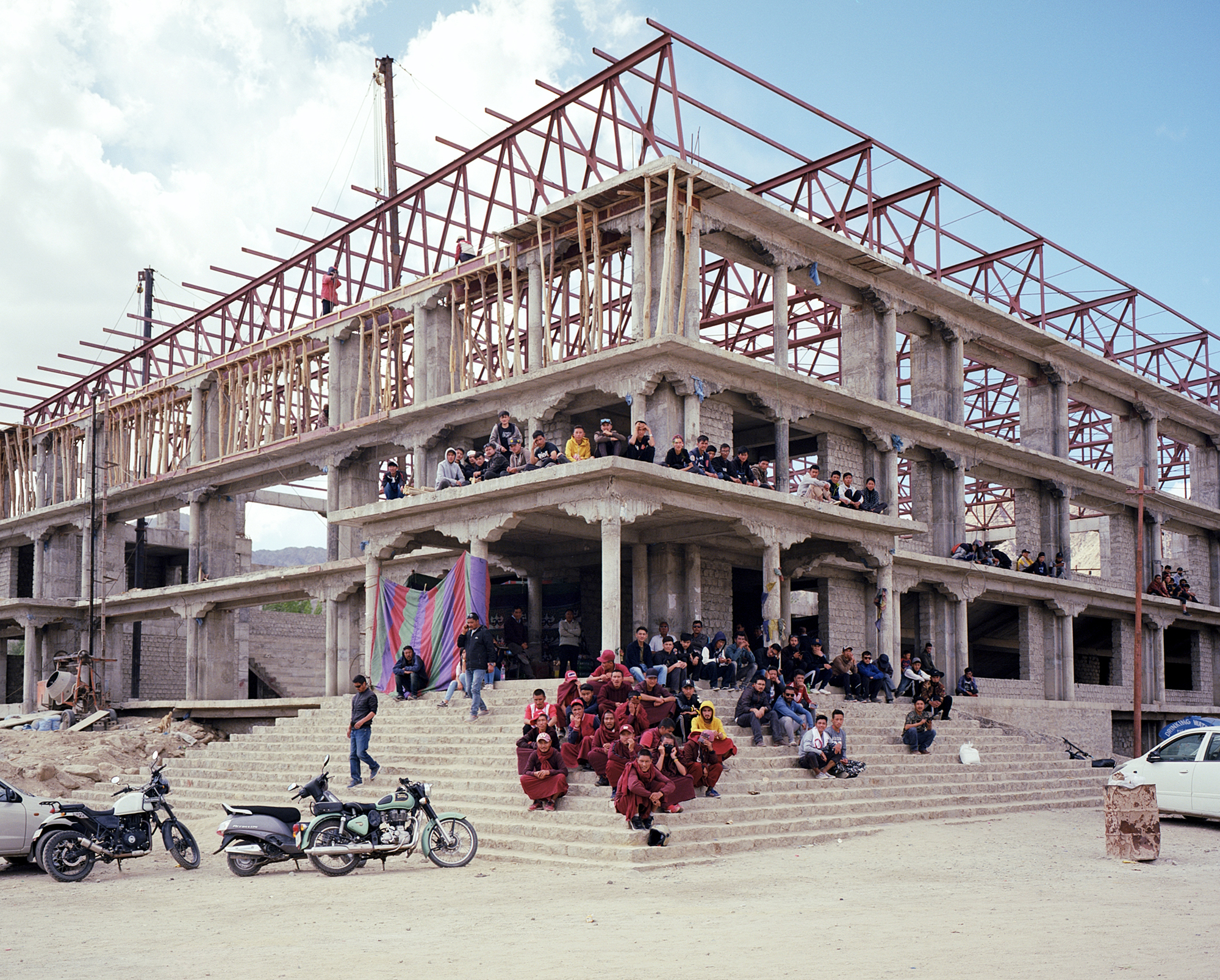
Across the mountains, behind sheltering rocks
A harsh and austere physical environment, Ladakh is a land enlivened by the warmth and hospitality of its people. From crystal mountain lakes to formidable mountain ranges, nature has an inevitable influence on the inhabitants’ relationship with it. In this photoessay, photographer Ralph Steinegger recounts his journey to one of the highest inhabited places in the world.
A crowd of young folks had gathered to watch a football match, taking place on a dusty pitch next to a never-completed building. It was a proper game, with linesmen and a referee. The spectators seemed to know the players, people were talking and laughing.
There was an easygoing, even peaceful atmosphere, and although I was not part of them, I didn’t feel excluded. After a few minutes of watching, I walked right up to the edge of the pitch, turned around and shot.
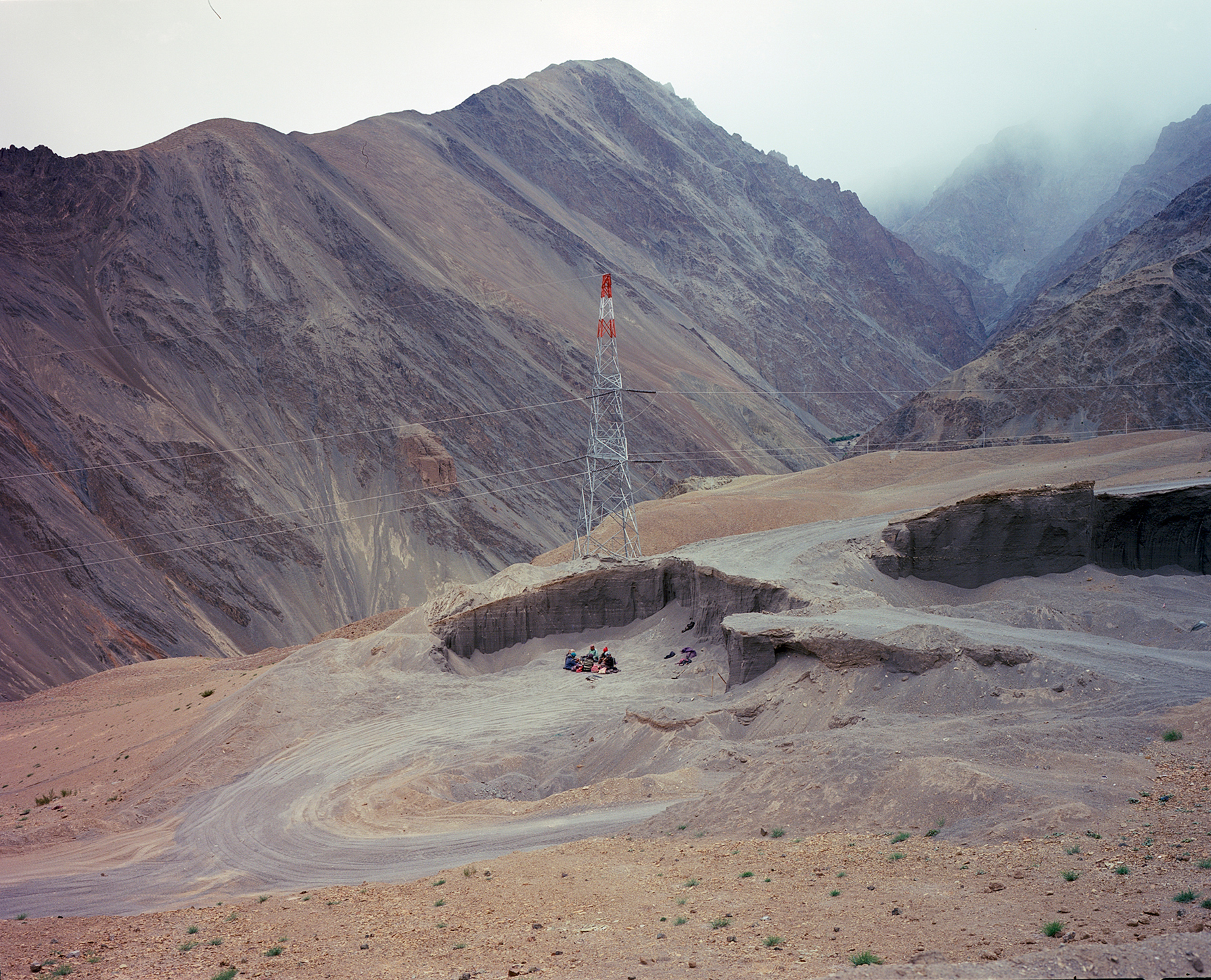
In spring 2019, I travelled with three friends to Ladakh, Northwestern India. The flight from New Delhi was short, yet spectacular: it took us over a vast ocean of glassy peaks, with massive glaciers reposing in between.
When we got off the plane, it felt like we had reached some kind of endpoint, a land from where one could not go any further. Colossal mountain ranges surrounded us in all directions: we had arrived high up in the Himalayas, in the Land (Dakh) of High Passes (La).
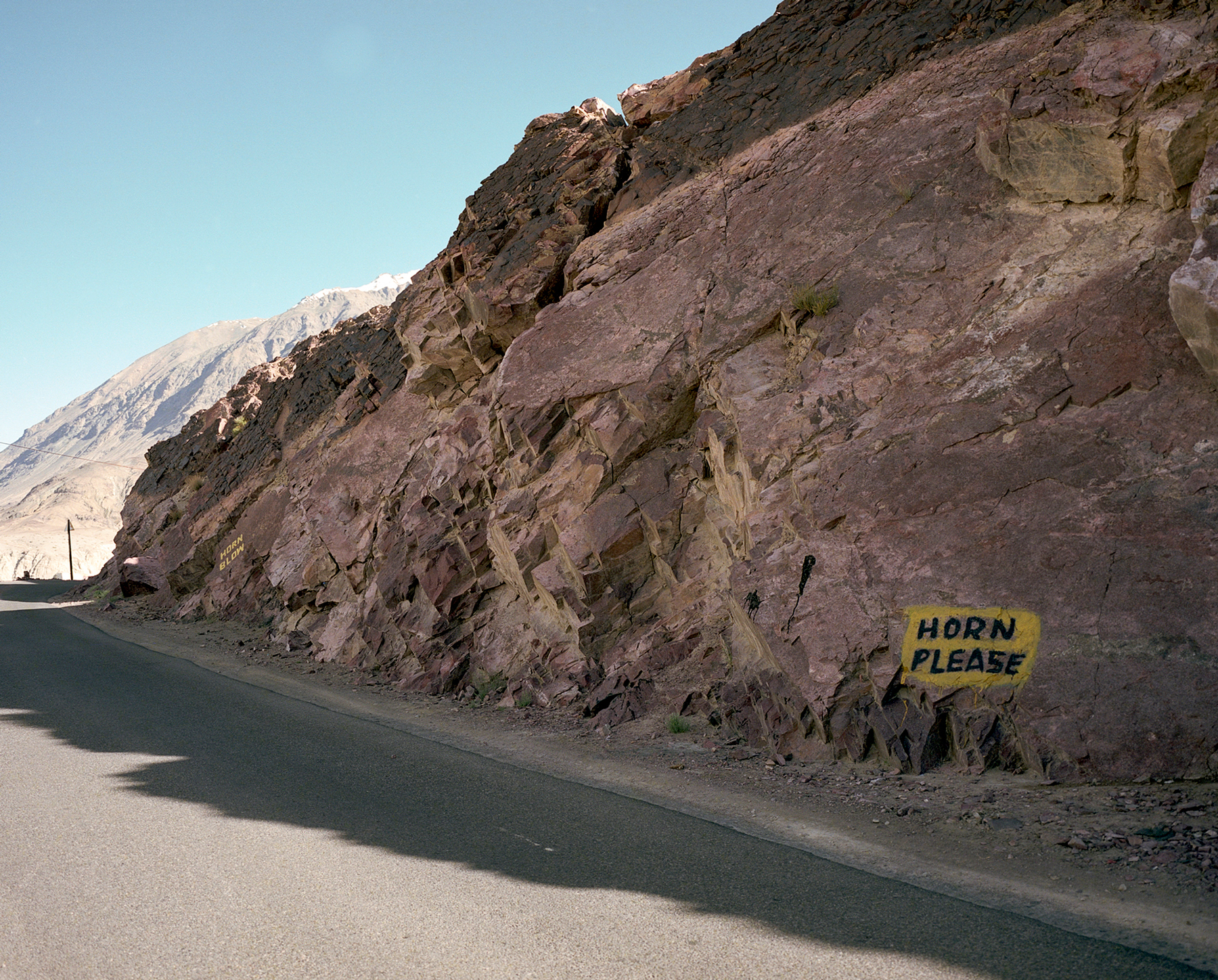
After arriving in Leh, the capital, we rented motorbikes in order to cross Khardung La, one of the highest motorable mountain passes in the world, connecting the Indus river Valley with that of the Shook river. Our aim was to reach the remote Nubra Valley, also known in Ladhaki as the “valley of flowers”.
Over the next few days, we travelled on our motorbikes towards every cardinal point, slowly discovering one of the coldest and highest inhabited areas of the world. This is a land of harsh and barren beauty, sparsely populated with long winters and fierce winds. There is little or no rain – glaciers provide most of the water, while vegetation is scarce.
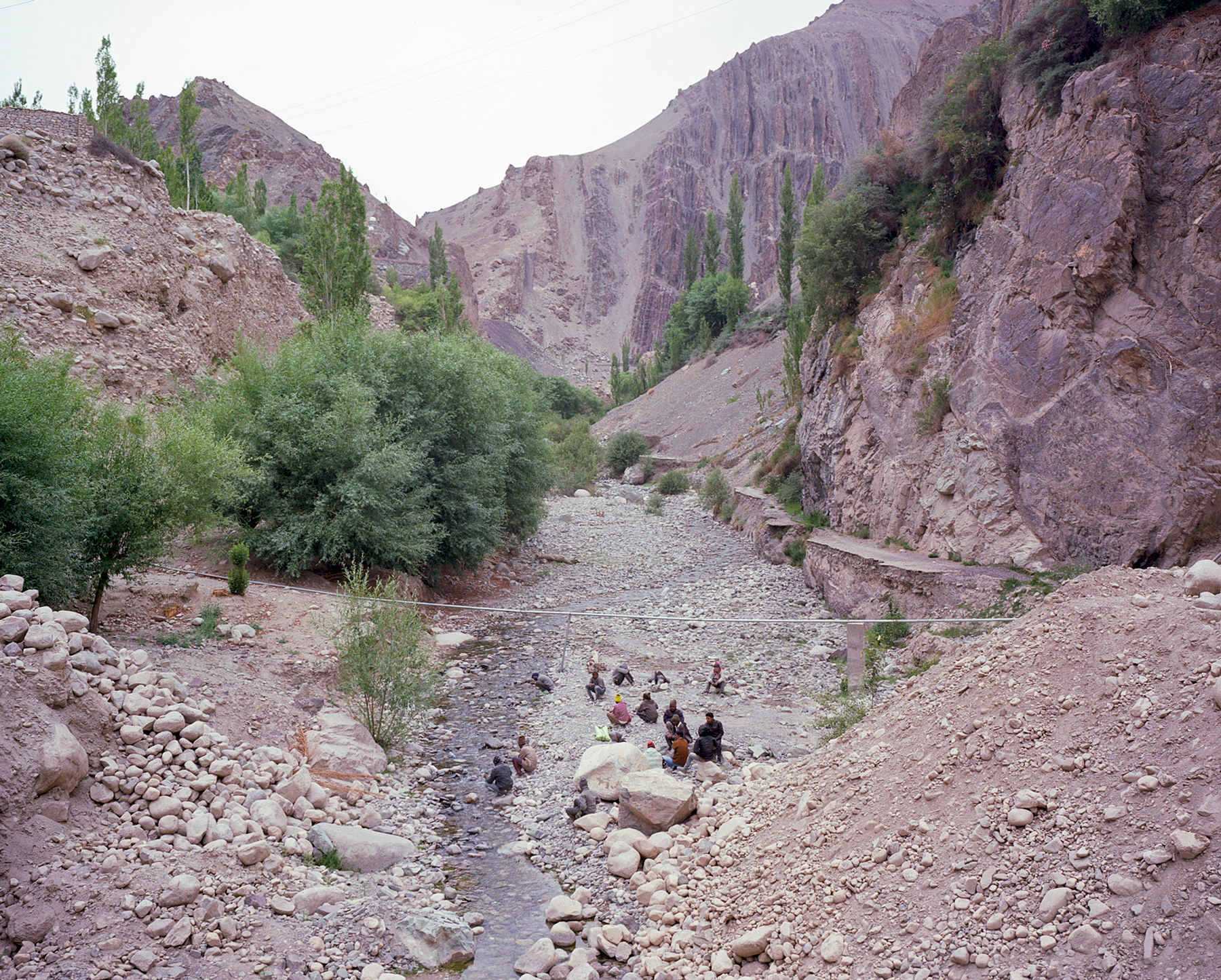
Austere and forbidding, this is a territory with an aura of lifelessness, yet mysterious and hauntingly beautiful. I once came across a bus stop that was, quite literally, in the middle of nowhere, with neither a house nor a human being in sight.
I remember myself wondering if the next bus would ever come. The scenery, with the forlorn structure and the barren hills framing it in the background, felt simultaneously desolate and wonderful – just like, as I soon came to realise, so much of Ladakh.
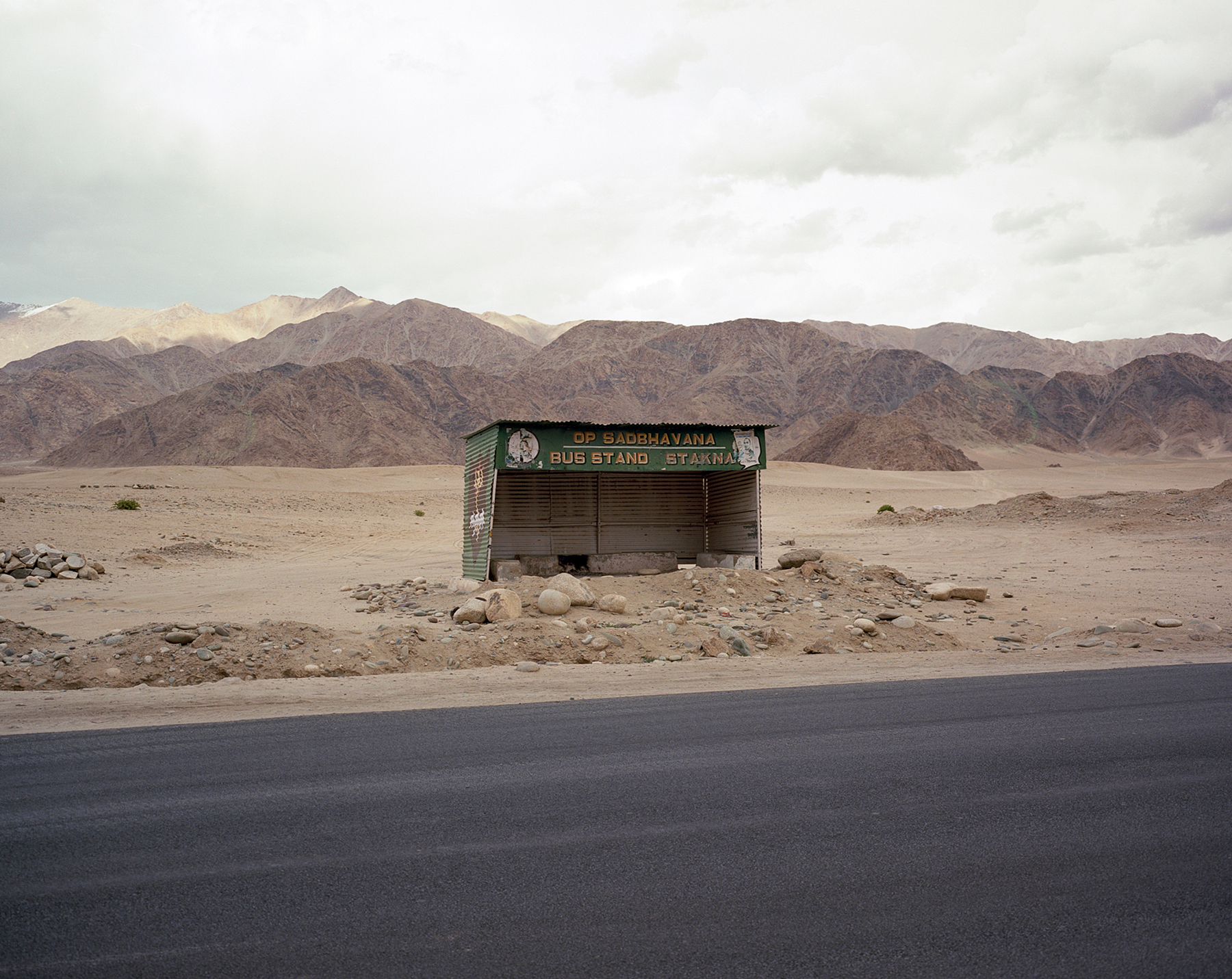
For days, we travelled along treacherous roads and passed by ancient Buddhist monasteries with their many prayer flags, until reaching the Indus River and crystal mountain lakes. Here, we met the Ladakhi people. Their ingenuity, tolerance, determination and hospitality left a deep impression on us.
Over centuries of geographical isolation, the Ladakhi have established a remarkably rich culture, that meets basic material needs and spiritual ones, while protecting the integrity of a particularly fragile ecosystem. In spite of, or perhaps precisely because of the scarce resources available, a cooperative spirit pervades their self-reliant way of life.

As in other parts of the world, however, tourism is changing the Ladakhi way of life. Since the construction of a road built by the Indian army in 1974 and the opening of previously restricted areas close to the Indian-Chinese border, the number of tourists visiting Ladakh has gradually increased from a trickle to several hundred thousand per year, prior to the pandemic.

Due to the rising income levels of Indian middle-class families and the expansion of private domestic airlines, the wild area of Ladakh now attracts a significant number of internal tourists.
As a result of this massive influx, the region’s vulnerable high-altitude ecosystem is progressively threatened by a number of anthropogenic agents and repercussions, such as groundwater pollution, deforestation, waste dumping and more water scarcity. Tourism has replaced agriculture as the region’s main source of income. Previously self-sufficient, Ladakh now imports most goods from other parts of India.
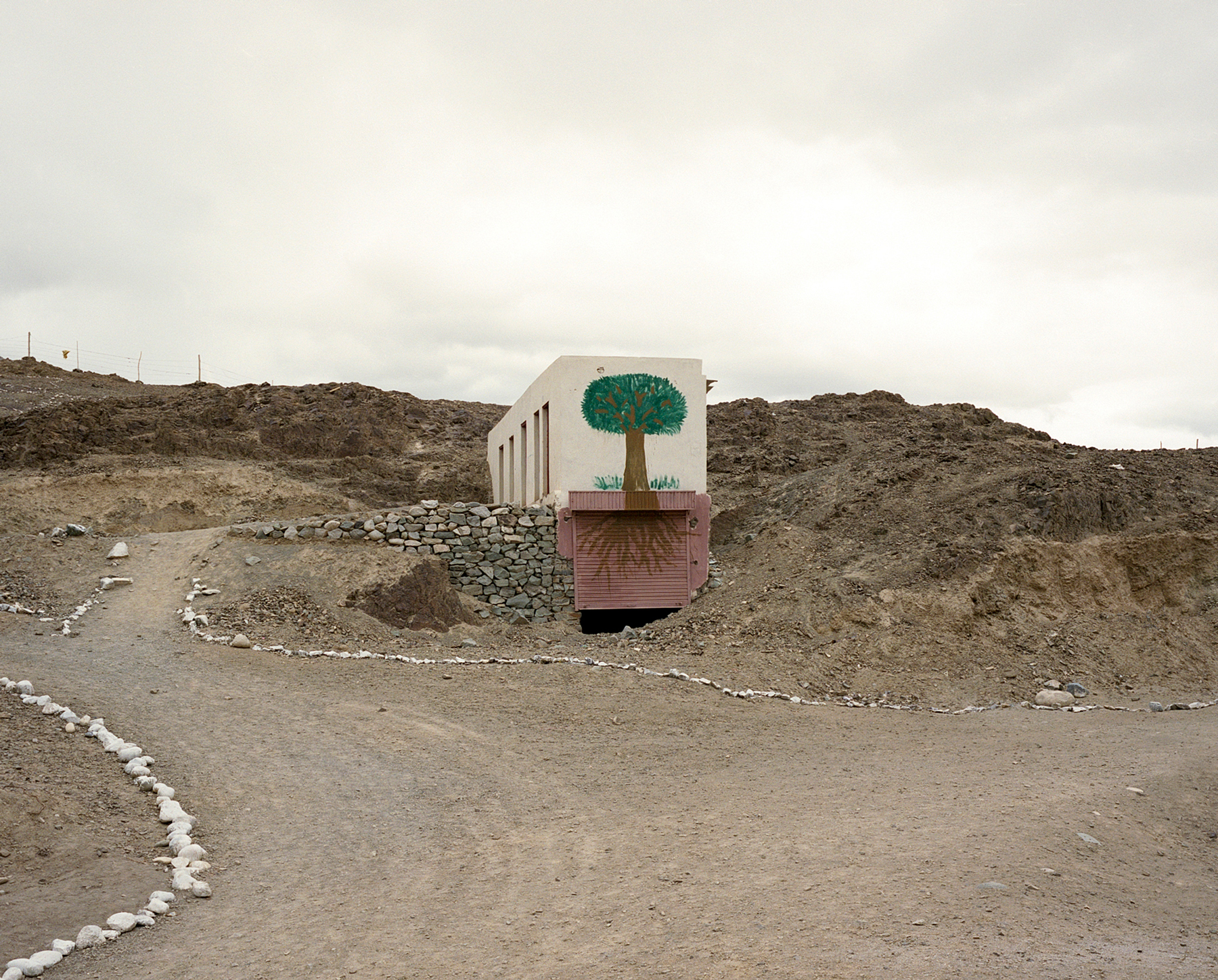
Yet I have the feeling that nature still strongly pervades in Ladhak. Once back home, in hot and humid Singapore, where I developed my film rolls, I noticed something curious. In many of the images I had taken, people seemed to be instinctively drawn to the rocks and boulders, of all forms and sizes, that so distinctly contribute to defining the region’s landscape.
I had come across one of these boulders myself, as I saw it resting on the stairs of a building. I have no idea how or why it ended up there. What I know, is that I was immediately intrigued by the scene and started walking towards it.
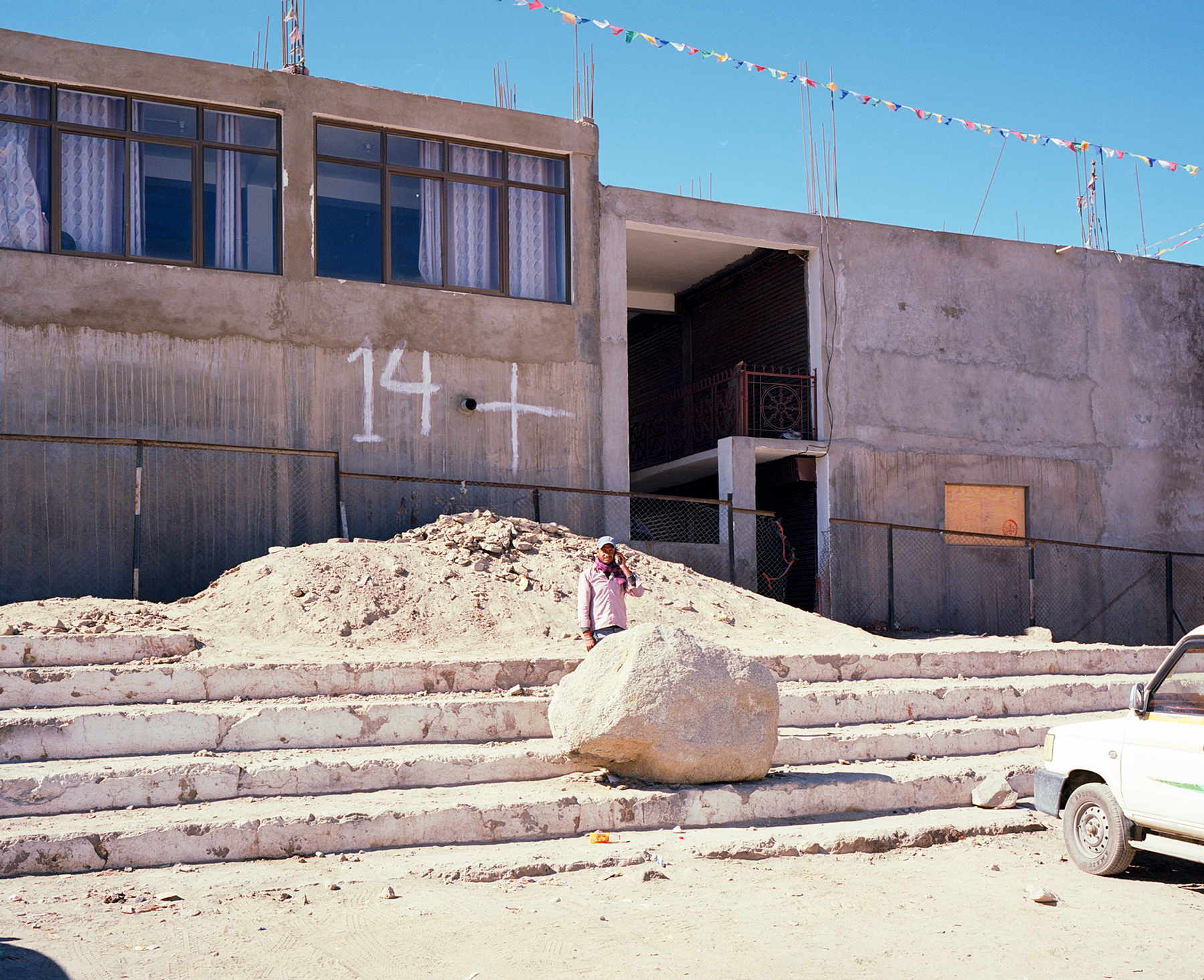
As I took out my camera, I realised that there was a person crouching behind the boulder. The person suddenly stood up, and looked at me while continuing to speak on his mobile. I smiled at him and took the shot. Now, looking back at this image, I find it curious that, like me with my camera, he also seemed to be enchanted by that big stone. I started to see it as an example of the special relationship that people in Ladhak have with their environment, an environment to which they had to adapt in ingenious ways.
Almost as if symbolising its presence in the form of these rocks and boulders, threateningly looming over all existence while providing protection and shelter, nature inhabits this place, as a strict yet benevolent guardian.
Recent articles

Southern California is many things. Quite infamously, it is known as a landscape defined by the automobile, from the emergence and diffusion of the highway system to fast food burgers, and the suburbanization of the United States. Walking this place then, would seem not only inconvenient, but ill advised. In… Read more »

What is today known as ‘whistleblowing’ could once take the form of interacting with a threatening gaze carved into the city wall. It is the case of the ‘boche de Leon’ or ‘lion’s mouths’ disseminated by the old Venetian Republic throughout its territory to suppress illegal activities. Through a close… Read more »

As he navigates through the recurrent lockdowns of the pandemic, stranded between hitchiking and muggings, job hunting and separations, Fabio Valerio Tibollo rediscovers photography as a powerful coping mechanism. Recording everything that happened around him for one year straight, from attending momentous events to finding curiosity in shots of simple living,… Read more »

